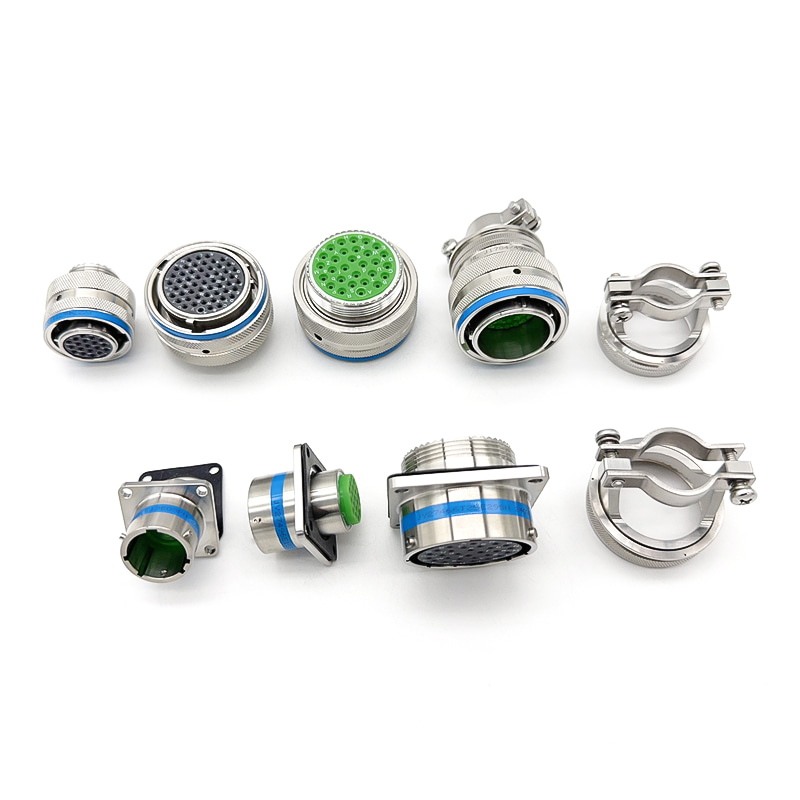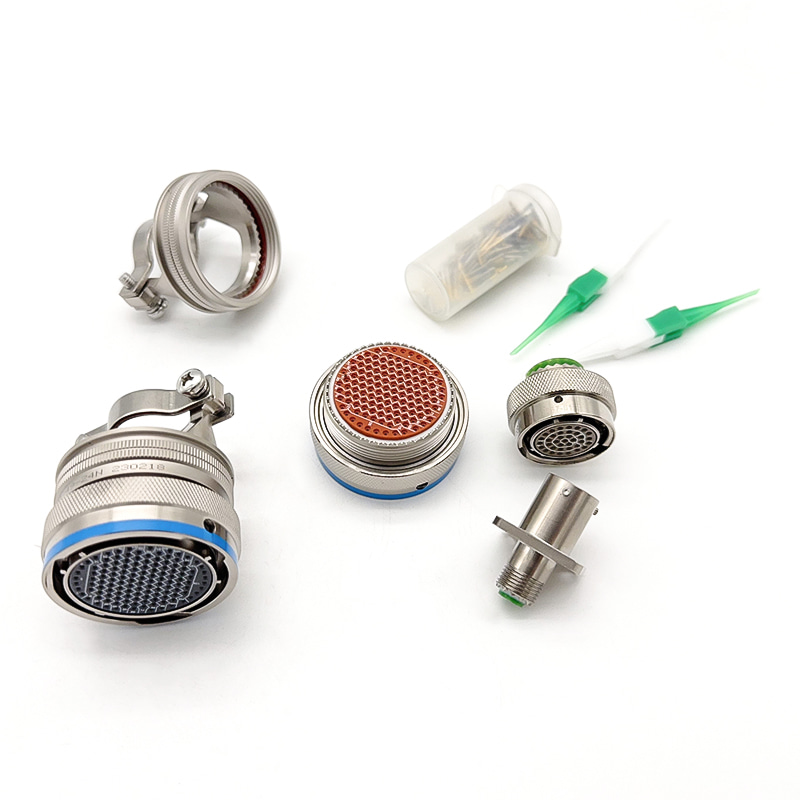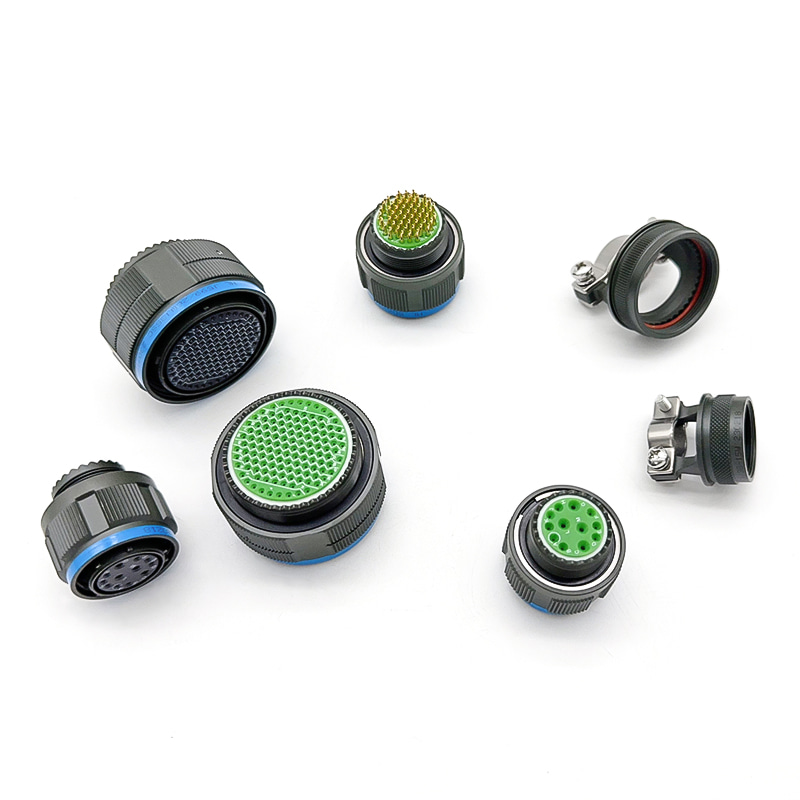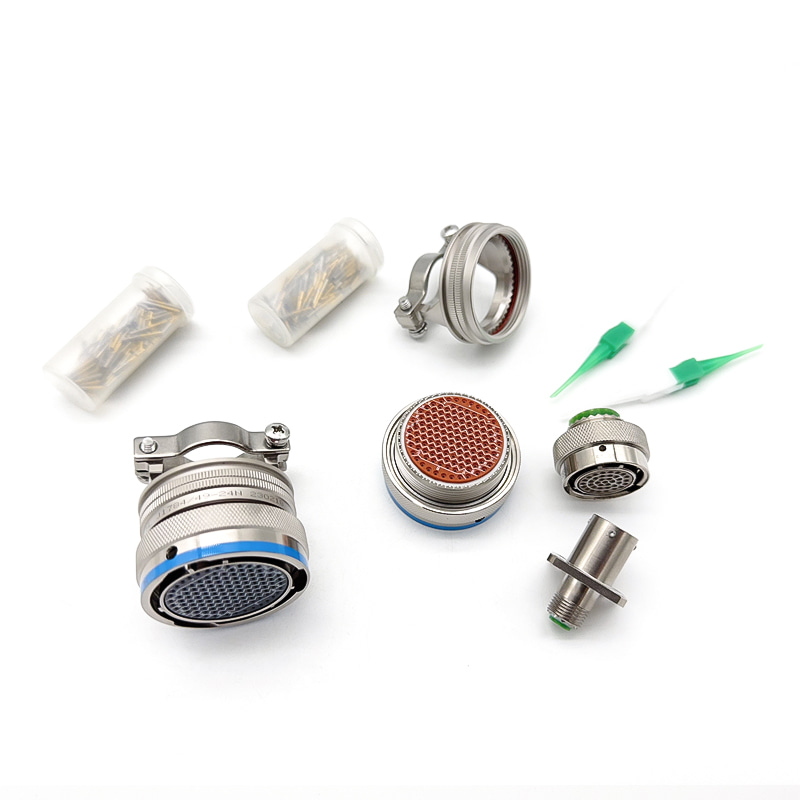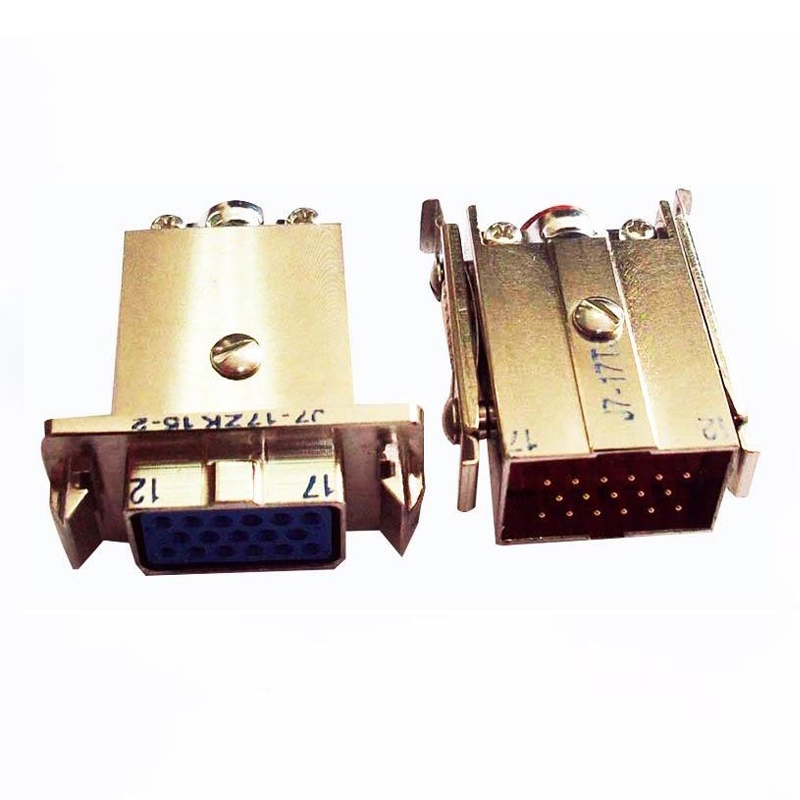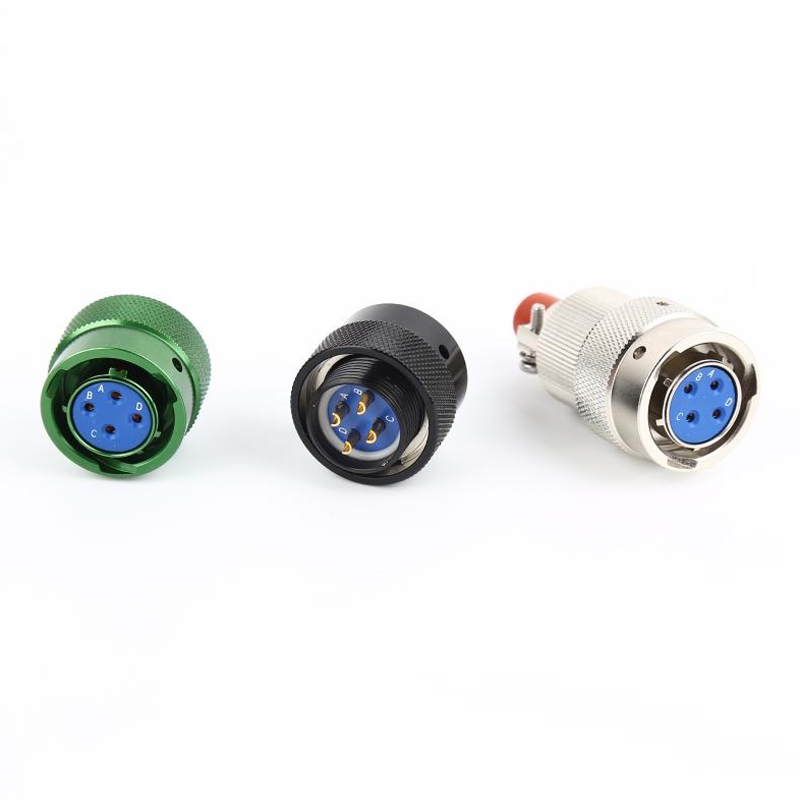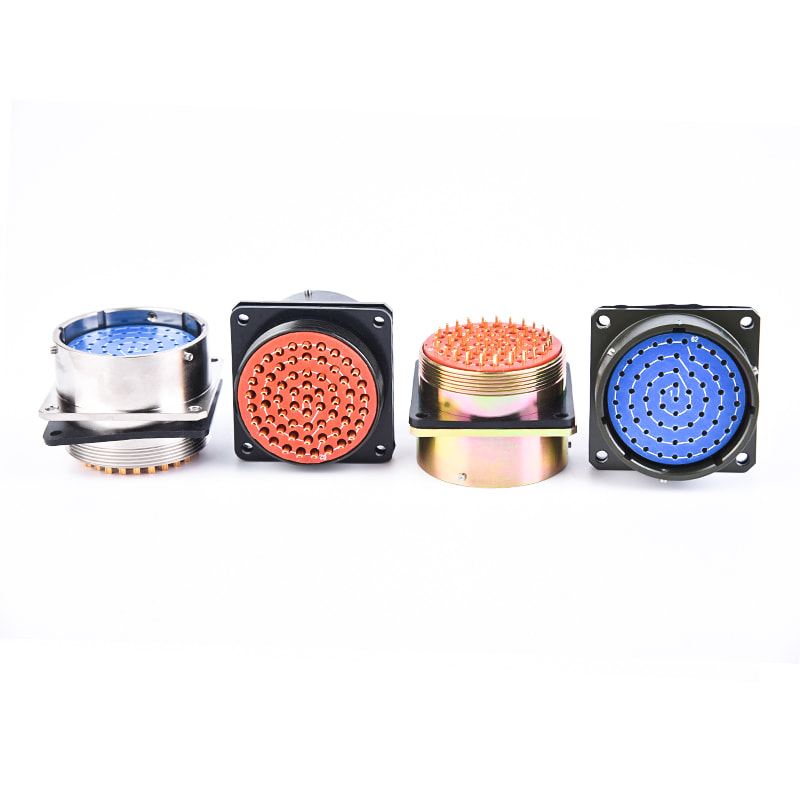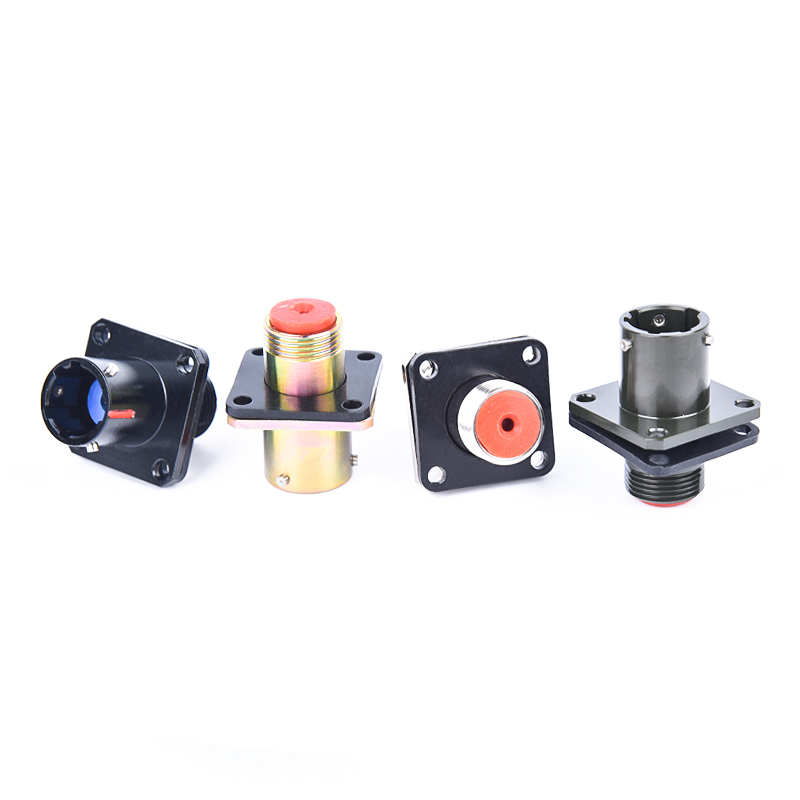- Home
- Products
- Solutions
- Quality
- Company
- Insight
- Contact
Web Menu
- Home
- Products
- Solutions
- Quality
- Company
- Insight
- Contact
Product Search
Exit Menu
Military Electrical Connectors: Reliability and Innovation in High-Voltage and Harsh Environments
-
All News
Product
- - Military Electrical Connectors
- - Circular Electrical Connector
- - Rectangular Electrical Connector
- - Push Pull Self-Locking Connector
- - Russian Connectors
- - Cable Connectors
- - RJ45 and USB Electrical Connectors
- - Fiber Optic Electrical Connectors
- - Anti Water And Electricity Connectors
- - Circular Power Connector
Military Electrical Connectors: Reliability and Innovation in High-Voltage and Harsh Environments
The Core Role of Military Electrical Connectors
Military electrical connectors serve as the "central nervous system" of modern military equipment, ensuring reliable transmission of information and power across a wide range of devices. In extremely harsh environments—from space to the deep sea, from polar ice to scorching deserts—military equipment must maintain absolute performance stability. The core role of military electrical connectors is to provide a robust and reliable "lifeline" for this equipment.
Their essential functions include:
1. Reliable Connection in Extreme Environments:
- High-Stress and High-Impact: The battlefield is full of violent vibrations and shocks from events like artillery fire or vehicle movement. Military electrical connectors must withstand accelerations of several hundred Gs, ensuring stable connections and preventing signal loss or short circuits.
- Temperature and Humidity: Operating from -65°C to over 150°C, military electrical connectors must maintain performance across extreme temperature ranges. Their sealed designs must effectively prevent the ingress of moisture, salt spray, and dust to protect sensitive internal circuits.
2. High-Performance Data and Power Transmission:
- Modern military systems, such as radar and communication networks, demand ever-higher data rates and bandwidth. Military electrical connectors must offer high bandwidth and low signal loss to ensure fast, high-fidelity transmission of critical data.
- For power transmission, they must handle high current loads while dissipating heat efficiently to prevent overheating and failure.
3. Electromagnetic Compatibility (EMC):
- In a complex electromagnetic environment, EMI from radar, radio, and electronic warfare systems can disrupt equipment. Military electrical connectors often feature special shielding, such as metal shells and shielding layers, to block external electromagnetic interference and prevent self-generated radiation, ensuring system-wide EMC.
Here is a comparison highlighting the performance differences between military and commercial connectors:
| Parameter | Military Electrical Connectors | Ordinary Commercial Connectors |
|---|---|---|
| Operating Temperature Range | -65°C to +200°C | 0°C to +70°C |
| Vibration Resistance | Withstands up to 2000Hz, 20G | Withstands lower frequency, lower intensity vibration |
| Shock Resistance | Withstands several hundred Gs of shock | Withstands lower intensity shock |
| Salt Spray Resistance | Withstands over 500 hours of salt spray corrosion | Usually no such requirement |
| Mating Cycles | 500+ cycles | 50 to 100 cycles |
| EM Shielding Performance | High-efficiency shielding to prevent EMI | None or low-level shielding |
Military Electrical Connectors: Reliability and Innovation in Critical Mission Applications
The core value of military electrical connectors lies in their unparalleled reliability and the continuous innovation that addresses future challenges. In critical applications, a connector failure can have catastrophic consequences, so their design and manufacturing must meet the highest standards.
Reliability: A Lifeline in Harsh Environments
1. Material Selection and Sealing Technology
The reliability of military electrical connectors begins with strict material selection. To survive in extreme temperatures, corrosive media, and high-pressure environments, they typically use:
- Housing Materials: Aviation-grade aluminum alloy or stainless steel, specially treated for excellent corrosion resistance and high strength.
- Insulation Materials: High-performance specialty plastics like PEEK, which offer high dielectric strength and heat resistance.
- Contact Materials: Gold or silver-plated copper alloys to ensure low contact resistance and prevent oxidation over long-term use in harsh conditions.
Advanced sealing technology is also key to ensuring their resistance to water, dust, and moisture. Using high-quality O-rings, gaskets, and unique housing designs, military electrical connectors can achieve high ingress protection ratings (e.g., IP67 or higher), ensuring the absolute safety of internal circuits.
2. Anti-Vibration and Anti-Shock Design
To cope with the intense vibrations and shocks of the battlefield, military electrical connectors feature several reinforcement measures:
- Mechanical Locking Mechanisms: Threaded, bayonet, or push-pull locking mechanisms ensure the connector remains securely mated under severe vibration.
- Internal Damping: Internal contacts and insulators are carefully secured to absorb impact energy and prevent damage during intense vibration.
3. Electromagnetic Compatibility (EMC)
The modern battlefield is filled with complex electromagnetic signals. Military electrical connectors must have excellent EMC. By using metal shielding shells, 360-degree grounding designs, and special filtering technologies, they effectively block external electromagnetic interference (EMI) while preventing self-generated electromagnetic radiation, ensuring the integrity of communication and data transmission.
Innovation: Technological Frontiers for Future Challenges
As military equipment becomes smaller and smarter, military electrical connectors are constantly innovating to meet new demands.
1. Miniaturization and High Density
Modern drones and wearable devices require connectors that are smaller and lighter. A key innovation trend is the miniaturization and high-density design of military electrical connectors, fitting more contacts into a smaller volume without sacrificing performance. This saves space and reduces overall equipment weight, improving mobility and endurance.
2. Modularity and Quick-Disconnect
In a combat environment, rapid deployment and maintenance are crucial. Modular military electrical connector designs allow for quick component replacement without rewiring. Quick-disconnect mechanisms (e.g., push-pull or bayonet) significantly reduce mating and unmating times, improving response speed in wartime.
3. Smart Connectors
Future military electrical connectors will be more than just physical links. By integrating sensors, self-diagnostics, and status monitoring capabilities, these smart connectors can monitor their own health, temperature, and connection status in real-time. In case of an anomaly, they can immediately alert the system, greatly improving overall system reliability and maintainability.
Reliability vs. Innovation Parameter Comparison:
| Feature | Military Electrical Connectors (Reliability) | Military Electrical Connectors (Innovation) |
|---|---|---|
| Primary Focus | Ensuring stable connections in extreme environments and preventing failure. | Meeting the needs of future military equipment for miniaturization, intelligence, and rapid response. |
| Typical Design Features | High-strength materials, multiple seals, mechanical locks, electromagnetic shielding. | Miniaturization, high density, modular design, quick-disconnect, integrated smart features. |
| Technical Goals | Extremely high weather resistance, vibration resistance, shock resistance, and electromagnetic compatibility. | Smaller, lighter, faster, smarter, and easier to maintain. |
Typical Application Scenarios
The application of military electrical connectors spans nearly every military domain, where they are crucial for ensuring the proper function of equipment under extreme conditions. From the air, to the ground, to underwater, these connectors play a vital, silent role.
Aerospace: The "Lifeline" in the Sky
In aerospace, reliability is paramount. Military electrical connectors are widely used in:
- Fighter Jets and Drones: They connect flight control systems, radar, communication equipment, and weapon systems. Subjected to severe vibrations, high-altitude low temperatures, and rapid pressure changes, these connectors must have extremely high vibration resistance, temperature tolerance, and sealing performance.
- Satellites and Rockets: In the vacuum and radiation of space, military electrical connectors must withstand extreme temperature swings, charged particle bombardment, and vacuum discharge effects. They connect solar panels, attitude control systems, and payloads; the failure of a single connector could lead to mission failure.
Ground Combat Vehicles: The "Nerve Endings" on the Battlefield
The ground combat environment is complex and challenging, full of shock, dust, and mud. Military electrical connectors in here play a critical role in connecting and protecting key systems:
- Main Battle Tanks and Armored Vehicles: They link fire control systems, night vision equipment, communication systems, and engine management. These connectors must withstand the shock of gunfire, the severe vibrations of high-speed travel, and corrosion from sand, dust, and mud.
- Field Communication Systems: In setting up temporary command posts and communication networks, the quick-disconnect design of military electrical connectors significantly shortens deployment time. Their robust structure and waterproof performance ensure clear communication in adverse weather.
Ships and Underwater Equipment: The "Guardians" of the Deep Sea
In the marine environment, high pressure, salt spray corrosion, and watertightness are the greatest challenges. Military electrical connectors in ships and underwater equipment are vital for:
- Submarines and Surface Vessels: They connect sonar systems, navigation equipment, fire control systems, and power distribution networks. Connectors must have excellent resistance to salt spray corrosion and high-pressure watertight performance.
- Unmanned Underwater Vehicles (UUVs): For deep-sea reconnaissance and military missions, military electrical connectors must withstand immense water pressure and ensure stable data and power transmission.
Application Environment Parameter Comparison:
| Application Area | Typical Environmental Challenges | Military Electrical Connector Key Performance Requirements |
|---|---|---|
| Aerospace | High-altitude low temperature, severe vibration, vacuum, radiation | High vibration resistance, temperature tolerance, high sealing, radiation resistance, lightweight |
| Ground Combat | Shock, vibration, dust, mud, extreme temperatures | High shock resistance, high vibration resistance, high ingress protection (IP), corrosion resistance |
| Naval/Underwater | High pressure, salt spray corrosion, moisture | High watertightness (pressure resistance), high corrosion resistance, salt spray resistance, electromagnetic compatibility |
Military electrical connectors are at the heart of national defense and military technology, and their future development will be closely linked to the global military modernization process. As military equipment evolves toward digitalization, intelligence, and network-centric operations, the role of military electrical connectors will shift from simple physical links to critical information nodes with higher performance, greater adaptability, and smarter functions.
Future Development Directions for Military Electrical Connectors
1. High Density and Miniaturization: With the proliferation of unmanned systems, small satellites, and soldier-wearable equipment, the size and weight requirements for connectors are becoming increasingly strict. Future military electrical connectors will continue to move toward higher density and smaller form factors to transmit more data and power in limited space.
2. Intelligence and Self-Diagnostic Functions: Future connectors will do more than just "connect." By integrating miniature sensors and processing chips, military electrical connectors will be able to monitor their temperature, vibration, connection status, and signal integrity in real-time. This "smart connector" functionality will significantly improve system reliability and maintainability, reducing troubleshooting time from hours to minutes.
3. High Data Rates and Bandwidth: As radar, optoelectronic reconnaissance, and data link systems demand exponentially higher data transfer speeds, military electrical connectors will need to support speeds in the Gbps and even Tbps range. This will drive the development of fiber optic connectors and hybrid connectors (electro-optic hybrid) technologies.
4. Modularity and Rapid Response: On the future battlefield, rapid deployment and modular replacement will be the norm. Future military electrical connectors will prioritize modular design to simplify field maintenance and upgrades, using more reliable quick-disconnect mechanisms to ensure fast connection and disconnection in emergencies.
Future Outlook for Taizhou Henglian Electric Co., Ltd.
Taizhou Henglian Electric Co., Ltd. has a long history in the field of military electrical connectors, with products covering military standards such as Y11, Y17, Y27, Y50, and applications in key areas including aerospace, nuclear energy, and railways. The company has a professional technical center and quality inspection center, with advanced production and testing equipment. Its products feature "three-proof" capabilities (moisture-proof, salt-fog-proof, mold-proof), high density, high reliability, and electronic compatibility—all core requirements for the future development of military electrical connectors.
Based on the company's profile, Taizhou Henglian Electric Co., Ltd. can focus on the following areas for the future:
- Technological Innovation: Continue to increase R&D investment, especially in high-density, high-speed, and smart connector technologies. For example, developing smart connectors with integrated self-diagnostic functions to meet the high reliability demands of next-generation military equipment.
- Product Line Expansion: On the basis of its existing circular and rectangular connector product lines, the company can further develop fiber optic connectors, electro-optic hybrid connectors, and smaller, lighter miniature connectors to adapt to the miniaturization trend of unmanned systems and soldier-worn equipment.
- Market Deepening: While continuing to serve existing military sectors, the company can expand into new markets with high reliability requirements, such as civil aviation, new energy vehicles, and industrial automation, leveraging its military electrical connector technology to gain broader market competitiveness.
Through continuous technological innovation and product upgrades, companies like Taizhou Henglian Electric Co., Ltd. will play an increasingly important role in the future military electrical connector market, providing robust technical support for the modernization of military equipment.

- Address : Jiangping South Road, Zhangqiao Industrial Park, Taixing City, Jiangsu Province, China
- Phone : +86 176 0151 5794
- Whatsapp : +86 176 0151 5794
- Email :[email protected]
- Email :[email protected]
- Home
- Products
- Solutions
- Quality
- Company
- Insight
- Contact
Copyright © Taizhou Henglian Electric Co., Ltd China Custom Electrical Connectors Manufacturers

 English
English русский
русский Español
Español 简体中文
简体中文